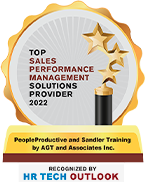Michael Mankins and Eric Garton introduced the term organizational drag in their book Time, Talent, Energy – Overcome Organizational Drag & Unleash Your Team’s Productive Power.
The term conveys a powerful and compelling mental image. We here at PeopleProductive call it Enablement – clearing the roadblocks holding your people back from accomplishing meaningful work – that also greatly affects their emotional state @ work.
Steve Stanton also talks about this in his book Smart Work – Why Organizations Full of Intelligent People Do So Many Dumb Things, And What You Can Do About It? although he doesn’t use the term “organizational drag”.
He’s a colorful guy and uses such terms as Email Mania, Meeting Madness, and Taskus Interruptus. Do you suffer from these ailments?
Many organizations do and unconsciously allow these ailments to persist. Collectively we are talking about 52%+ of your human productive capacity at work. And no one seems to own these productivity killers!
What is Organizational Drag?

Mankins and Garton describe organizational drag as a “collection of institutional factors that interfere with productivity yet somehow go unaddressed.”
This “collection” includes such ailments as excessive time spent in unproductive meetings, interruptions that prevent knowledge workers from getting into a state of cognitive flow, delays due to inefficient decision making, bureaucratic processes and procedures, and a stressful (physical) work environment (too noisy, too hot, crowded, etc.)
How does it affect the human experience at work?

Notwithstanding the human productivity impact, organizational drag has a debilitating effect on the human experience at work. People leave work stressed out as they can’t accomplish their work.
They bring it home with them. Pressure mounts as deadlines loom. They can’t get work done at work. As Mankins and Garton state “organizational drag saps energy and drains the human spirit.”
And as Stanton asserts, people have no time to think @ work. These productivity killers rob time not only to get work done but think time as well. What suffers? Innovation does.
What you can do about it.

Be aware and make all in your organization aware of these ailments.
Monitor it so they don’t reappear!
Take action to sensitize all to the ailments of organizational drag and seek to minimize its debilitating effects.
Hmmm, should you consider a VP of Human Productivity @ Work? Is this the CHRO? CPO? The line executive? No longer should these productivity killers be organizational orphans. CONSIDER ASSIGNING AN EXECUTIVE WHO’S CHARGE IS MAXIMIZING HUMAN PRODUCTIVTY @ work.
We are talking about wasting 52%+ of the productive capacity of your people and the toll it takes on their emotional health. It more than justifies an executive focus
Don’t hesitate.

Attack organizational drag and watch your return on human capital significantly improve. Experience the positive effect it will have on the emotional state of people @ work, eliminating its debilitating effect on the “human spirit” depleting their energy.
Start today!




